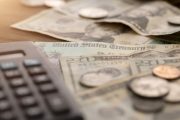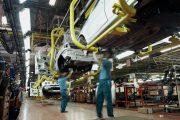
Polls, surveys, and other economic and financial indicators just released confirm that the U.S. economy continues to generate goods and services at a torrid pace. Following a report by the government that the gross domestic product (GDP) came in slightly under forecast for the first quarter of 2018 at 2.2 percent annual growth, the New York Federal Reserve’s Nowcast is at three percent for the second quarter, while the St. Louis Fed’s Eco News index is predicting 3.6 percent growth and the Atlanta Fed’s Nowcast comes in at four percent.
Following ADP’s jobs report on Wednesday that the economy added 178,000 new jobs in April, forecasters are predicting that the jobs report from the Bureau of Labor Statistics (BLS) on Friday should come in close to 200,000.
Consumers are enjoying their tax cuts by spending some of their extra money at a greater rate than many expected. The government’s Bureau of Economic Analysis (BEA) just reported that consumer spending jumped 0.6 percent in April, following hard after a 0.5 percent jump in March.
The Federal Reserve’s “beige book” — an anecdotal review of economic activity noted by the Fed’s 12 regional banks — showed the U.S. economy “shifted into high gear” last month despite concerns over Trump’s tariffs. The Fed noted: “Contacts noted some concern about the uncertainty of international trade policy. Still, outlooks for near term growth were generally upbeat. Economic activity expanded moderately in late April and early May, with few shifts in the pattern of growth.”
Leo Nelissen, an investment advisor writing for Seeking Alpha, looks at five regional banks’ surveys every month and then combines them into a report to his clients. Every one of them remain strong, with “sub-indicators” (i.e., new orders, shipments, employment, prices, and future capital expenditures) showing continued improvement, with one regional index (Kansas City’s) reaching a new all-time high. New orders remain robust, with shipments reflecting them. Said Nelissen, “We are seeing one of the biggest increases [in shipping activity] since the start of the upswing in 2016 … indicat[ing] further strength for the U.S. transportation industry.”
Regional manufacturing employment “almost made a new high in May after starting in impressive rally in 2017,” added Nelissen.
Capex (capital expenditures), according to Nelissen, “is still at rock-solid levels. Not even 2010 got close to the current expectations.” All of which, according to Nelissen, bodes well for stocks: “[Our indicators] this month have shown that there is more momentum to the upside which is likely going to support the stock market … in the next three to six months.”
Add to that mix the improvement in consumer confidence increasing in May along with the increase in corporate profits jumping nearly eight percent in the first quarter and one is forced to conclude that the Trump economy continues at full throttle.
And it’s likely to continue well into the out years. Ben Leubsdorf, writing in The Wall Street Journal, noted that “fixed nonresidential investment [i.e., capital investments into new equipment, factories, and software technology] rose at a 9.2 percent annual rate in the first quarter, including a large upward revision for investment in intellectual property products such as software.”
This is the beginning of what this writer has repeatedly called the “turbo-charging effect” of new capital being repatriated from overseas, thanks to the tax reform act. That is probably a misnomer: the economy is already firing on all cylinders. That new capital is behaving more like an afterburner on a jet engine.
Image: 3alexd via Vetta / iStock / Getty Images Plus
An Ivy League graduate and former investment advisor, Bob is a regular contributor to The New American magazine and blogs frequently at LightFromTheRight.com, primarily on economics and politics. He can be reached at [email protected].
Related articles:
More Than 40 Million Americans to Travel on Memorial Day Despite Higher Gas Prices



